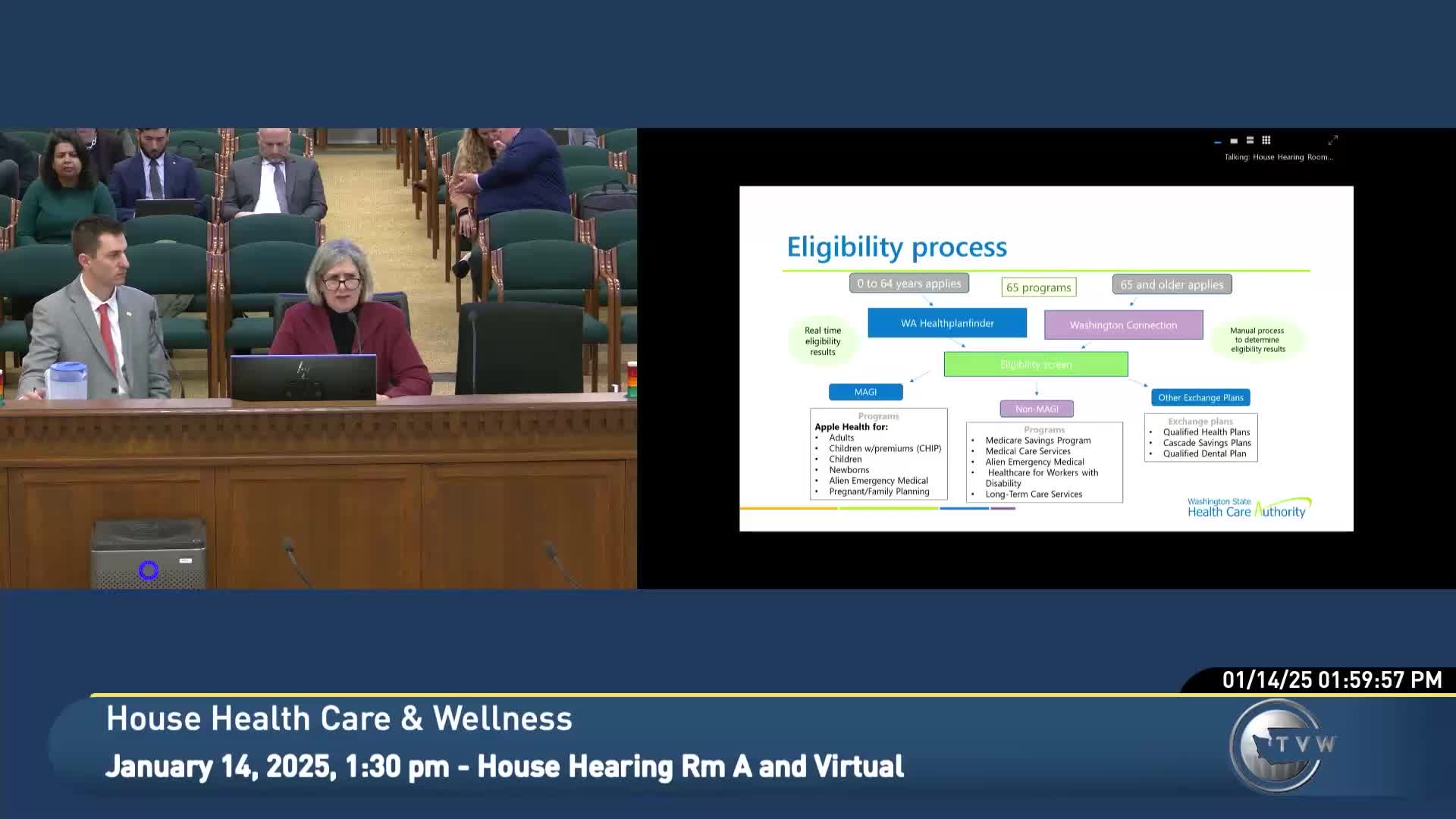JLARC finds growing tax savings from precious-metals preferences; effect on competitiveness unclear
January 14, 2025 | Health Care & Wellness, House of Representatives, Legislative Sessions, Washington
This article was created by AI summarizing key points discussed. AI makes mistakes, so for full details and context, please refer to the video of the full meeting. Please report any errors so we can fix them. Report an error »

The Joint Legislative Audit and Review Committee told House Finance Jan. 14 that Washington’s sales-and-use and business-and-occupation (B&O) tax preferences for precious metals and monetized bullion produced substantially higher beneficiary savings between 2017 and 2023, but the impact on competitiveness is unclear.
JLARC staff said the preferences—which date back to 1985—saved about $28.4 million in fiscal-year 2023 alone, a 457% increase from $5.1 million in 2017. Over a seven-year period the preferences reduced tax collections by about $111 million, and JLARC estimates the preferences will save roughly $165 million over the next three biennia.
The Legislature did not state an explicit objective when the preferences were enacted; JLARC and past reports infer the goal was to treat sales of precious metals like other investments and keep Washington businesses competitive with out-of-state sellers. Van Moorsil said that inference raises a question about online sales: following the U.S. Supreme Court’s South Dakota v. Wayfair decision, states can require remote sellers to collect destination-based sales tax, and JLARC found that the sales-and-use preference applies to out-of-state sellers delivering into Washington. As a result, the preference provides limited competitive advantage for local businesses on online deliveries, Van Moorsil said.
JLARC recommended the Legislature decide whether to continue the preferences and, if it does, add a public-policy objective and performance metrics. Staff noted the growth in savings could relate to higher spot prices for gold and silver and stronger online marketplaces, and that the share of savings reported by out-of-state sellers rose from 24% in 2017 to nearly 40% in 2023.
Rep. Santos asked whether transactions and prices are tracked; JLARC staff said spot-price data are public and that beneficiary savings estimates come from self-reported tax returns, and there is no system currently in place to track each transaction’s price or buyer across the state. The committee discussed the distinction between monetized bullion and other investment forms such as ETFs.
JLARC staff said the preferences—which date back to 1985—saved about $28.4 million in fiscal-year 2023 alone, a 457% increase from $5.1 million in 2017. Over a seven-year period the preferences reduced tax collections by about $111 million, and JLARC estimates the preferences will save roughly $165 million over the next three biennia.
The Legislature did not state an explicit objective when the preferences were enacted; JLARC and past reports infer the goal was to treat sales of precious metals like other investments and keep Washington businesses competitive with out-of-state sellers. Van Moorsil said that inference raises a question about online sales: following the U.S. Supreme Court’s South Dakota v. Wayfair decision, states can require remote sellers to collect destination-based sales tax, and JLARC found that the sales-and-use preference applies to out-of-state sellers delivering into Washington. As a result, the preference provides limited competitive advantage for local businesses on online deliveries, Van Moorsil said.
JLARC recommended the Legislature decide whether to continue the preferences and, if it does, add a public-policy objective and performance metrics. Staff noted the growth in savings could relate to higher spot prices for gold and silver and stronger online marketplaces, and that the share of savings reported by out-of-state sellers rose from 24% in 2017 to nearly 40% in 2023.
Rep. Santos asked whether transactions and prices are tracked; JLARC staff said spot-price data are public and that beneficiary savings estimates come from self-reported tax returns, and there is no system currently in place to track each transaction’s price or buyer across the state. The committee discussed the distinction between monetized bullion and other investment forms such as ETFs.
View full meeting
This article is based on a recent meeting—watch the full video and explore the complete transcript for deeper insights into the discussion.
View full meeting
